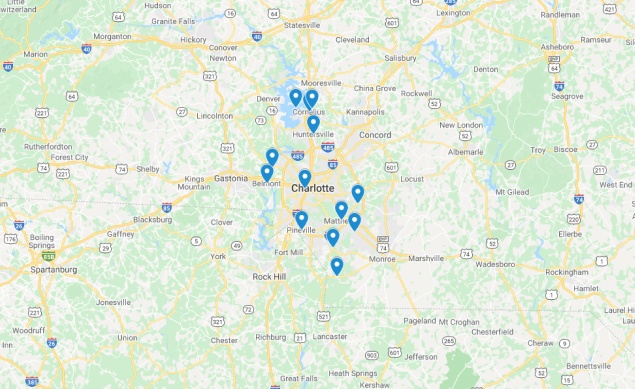The potential for finding a plethora of new mass tort clients is greater than many attorneys think. There’s often a lot of competition for law firms aiming solely to target individuals who are already looking for representation in a mass tort. However, generally, only about 10-20 percent of those who suffer actionable harm actually seek and join litigation efforts.
Marketing for mass tort support means going after 100% of individuals who might qualify for a claim, not just a fraction of the potential leads. Here’s how to reach those who are not a part of that mere 10-20 percent.
Marketing Mass Torts vs. General P.I. Law Firm Marketing
Mass tort marketing is the application of marketing principles to gain leads and customers for a mass tort. In a mass tort, you will deal with common issues among numerous plaintiffs, usually with regards to drugs and medical devices. Adding more plaintiffs to a mass tort creates economies of scale. Instead of representing only a single individual harmed by a device or company, you can put together a case for multiple individuals who have suffered the same types of injuries.
Mass tort marketing often addresses highly specific concerns. Mass tort marketing usually focuses on particular product liability cases because all leads are impacted by the same cases. You can reference the company at fault or the specific injuries directly, rather than needing to use vague terms to help capture as many leads as possible.
Personal injury practice marketing, on the other hand, is usually more vague. Marketing for personal injury clients seeks to capture leads in very different circumstances with a wide range of damages. While the same types of injuries may show up repeatedly, they may occur under dramatically different conditions. Vaguer marketing language, therefore, often does a better job of capturing those personal injury clients.
Goals for Marketing a Mass Tort Practice
When your practice handles mass tort claims, you may have several specific goals related to your marketing efforts. Primarily, a mass tort practice wants to find individuals who are looking for representation and receive contact information, such as email address or phone number. Once you have this vital information, you can move those leads through the sales funnel and provide them with the insight they need to choose your practice.
Digital Marketing
Digital marketing includes several different strategies needed to work together in order to create a sense of connection and trust in potential clients. Your digital marketing efforts should fit together seamlessly to give potential clients a better idea of what to expect when they connect with your brand: your voice, your focus and what you have to offer your clients. Digital marketing for mass tort claims should cast a wide net but also be explicitly directed at the clients who are most likely to need assistance with specific claims.
For example, if you know patients in a specific geographic region experienced problems with a certain type of drug or medical device, you may want to target your marketing directly to those regions. You may also want to target your digital marketing efforts directly to individuals who have searched for specific keywords related to a known claim or claims covered by your law firm.
Pricing
The cost of digital marketing can be calculated based not on the advertisement itself, but on its results. Digital marketing efforts may be calculated by:
Cost per lead. How much does it cost to acquire one lead through your digital marketing efforts? The cost per lead represents the price of bringing a potential client into your sales funnel. Ideally, once you have acquired a lead, you can convert that lead to a client.
Cost per action. Sometimes you want users to take specific action: filling out a lead form, for example. On social media, you may be looking for particular types of engagement, including actions that can help spread the word about a specific claim.
Cost per click. Google Ads, in particular, often require payment based on cost per click. While your advertisements may be visible to a wide range of potential clients, your payment will be based on the number of potential clients who click through that ad.
Placements
Like most types of advertising, placement matters when it comes to your digital ads. Many digital advertisement strategies are based on an inbound marketing perspective. This approach aims to meet potential clients where they already are so clients will reach out to you, rather than you going out to get them. Other digital marketing strategies are based on locating clients where a wide range of them are likely to spend time online; social media, for example, can help you cast a wider net.
Facebook Ads. Facebook Ads allow for highly targeted marketing that permits you to customize the audience for your ads. You can customize your Facebook Ads audience based on a certain geographic area as well as the types of things the client likes or has interacted with in the past. Facebook Ads may appear directly in a potential client’s newsfeed or in a sidebar based on how you customize the ad.
Twitter Ads. Like Facebook Ads, Twitter Ads allow for highly targeted advertising; you can customize your audience based on previous interactions and engagements. Twitter Ads are a great way to retarget potential clients who may have visited your site in the past but didn’t follow through, as well as locate potential clients who may have tweeted about existing medical claims. Twitter Ads have a pay-for-performance strategy – you don’t pay for the cost of your ad campaign until it reaches your preset goals.
Instagram Ads. Instagram ads are often highly visual, allowing you to make use of images to reach your target audience. They are less invasive than ads on many other platforms and cause less of a disruption in your potential leads’ processes. This allows you to reach a broader range of people. Instagram Ads also have a higher rate of engagement than other social media platforms. Users are more likely to interact with your ad, click through, or visit your firm’s website to see what else you have to offer.
Google Display Network Ads. These display ads are the banners and other advertisements that appear across numerous websites. You may customize your ads to appear on specific types of websites, including those you believe your clients are most likely to visit. Google Display Network Ads are ideal for retargeting potential clients. They have high visibility and may appear in numerous locations. Many clients need multiple “touches” or contacts with your firm before they’re ready to make a decision about which firm to use, and your Google Display Network Ads will help naturally add those future touches.
Google Search Ads. Search ads appear when a user does a search for specific keywords. You may want to create highly targeted ads related to specific types of product liability or you might choose to target your advertisements based on claims your firm is already working on. These ads target active searchers who are already looking for specific information about these types of claims, which can help improve your ability to find other claimants in a mass tort case.
YouTube Ads. YouTube ads typically appear before or during videos shown on YouTube, allowing you to cast a wide net. Potential clients who already have an interest in your firm, or those who have suffered an injury in a specific way, are more likely to watch all the way through those ads and, as a result, contact your company. YouTube Ads are highly visual in nature, which can help put a face on your business.
Search engine optimization. Your SEO helps raise your law firm in search engine rankings and increases the odds that you will appear when potential clients search for related search terms. SEO targeting will help you reach individuals who are looking for information online about the harms they have suffered and what litigation is already in place. Working with an SEO specialist can help you target the right keywords and raise your search engine ranking through strategies like:
- Location targeting, if you want clients from a specific geographic region
- Keyword-optimized content creation
- Landing page optimization
Pay for performance advertising. Pay for performance advertising models allow you to pay for what your advertisements accomplish, which means you make payments based on the leads generated by those ads, not just by how they’re seen. Twitter, for example, uses this model for its advertisements.
Ad placement works not only to generate leads, but also to convert them. As potential clients see more information about your firm, they’re more likely to make a decision for your practice over your competitors.
Traditional Marketing
Traditional marketing methods include many of the same strategies that historically have been used to help generate interest in business. This includes:
TV commercials. When your firm appears on television, it creates a sense of recognition in viewers that can translate to a better opinion of your brand. Many users may distrust ads they only see online, especially if they’ve seen a number of law firms pop up in their advertisements recently. TV commercials, on the other hand, add legitimacy. They can also put a face on your practice, helping viewers feel a deeper connection to your brand.
Radio advertising. Radio advertisements help you reach out to potential clients and connect your brand to that station. You can create audio advertisements that play between spots on the radio station or, in some cases, work with a radio station to have the hosts talk about your brand. Many listeners are loyal to a specific station, and using that station to advertise will help increase their positive opinion of your brand.
Billboards. Billboards help get your name out there and are highly visible, reaching a large number of people each day. By placing a billboard in a prominent location, you can quickly target a large, diverse market. Billboard ads allow you to spread the word about a mass tort to a much wider audience – including an audience that might not realize they have grounds for a claim related to a specific incident or product. Billboards are huge, eye-catching, and often create a strong visual reaction in people who see them.
Buy Leads from a Lead Generation Service
Lead generation services can help you locate leads particularly interested in your products. This strategy, however, can result in bad leads or too much competition from other lawyers, which can lead to substantial increases in your client acquisition costs.
If you buy leads, expect the cost to acquire a high-quality client to be in the thousands of dollars and prepare your marketing plan accordingly.
Content Marketing
Content marketing will provide interested clients with the information they need, not only to select your business, but to increase their understanding of the mass tort process and what they can expect from your firm. This strategy works not only for lead generation, but also for conversion marketing and brand building. Content marketing may include:
- Blog posts
- Videos
- Social media posts
- Infographics and other images
- Webinars
An effective content marketing strategy will help you develop an extensive content library. This content library will provide potential clients with vitally-needed information about what a mass tort is, why they should participate in a claim, what they stand to gain, and even specific types of injuries. You can also cover specific claims and their details, including who may want to participate in those claims. As your content library expands, it will not only increase search ranking, but also raise your perceived authority to your clients.
Conversion Marketing
Conversions occur as you move prospects from leads to clients. Content marketing and SEO are powerful tools to help with this process. These strategies can take leads from the top of the sales funnel to the bottom and provide them with the tools they need to make a decision in favor of your business. Part of moving your clients from leads to conversions means generating advertising used to retarget prior visitors, bringing them back to your website. Content marketing can also help educate potential clients who might not even know they have a claim.
The cost to acquire clients can be high because the majority of people who click on an advertisement will not be ready to talk to a lawyer. Content marketing brings in leads, but SEO takes time before it will bring visitors to convert. Once leads start coming in, it’s important to maintain a high marketing ROI by converting as many leads as possible. Each lead not converted lowers the ROI of your marketing efforts.
At the end of the day, mass tort marketing is only a worthwhile venture if the investment results in positive returns. Several means exist to optimize marketing ROI without actually changing your marketing strategy.
If you want to know how to keep marketing ROI as high as possible, download our eBook “10 Ways to Ensure Your Leads Are Not Lost in Your Next Mass Tort Campaign.”






